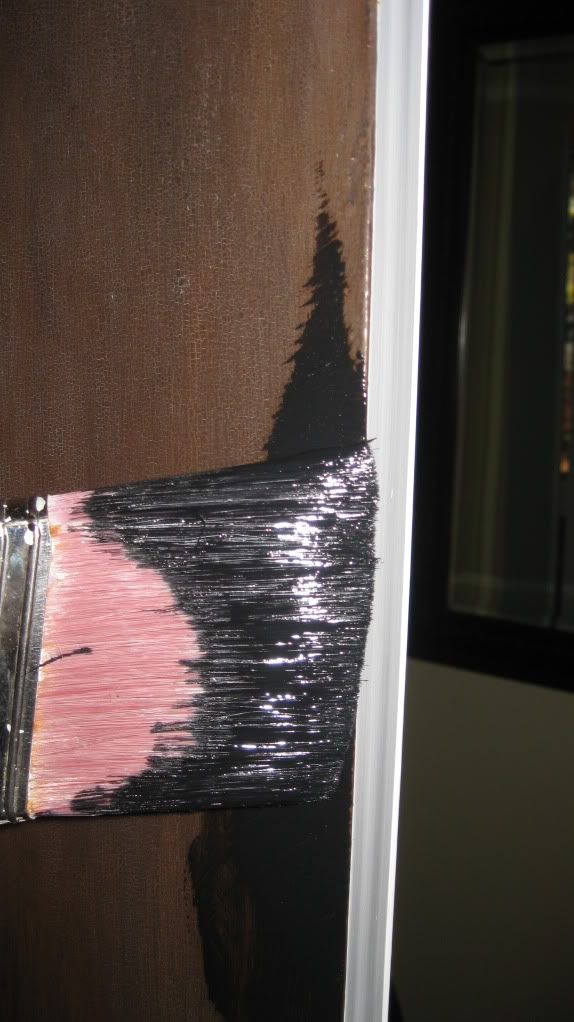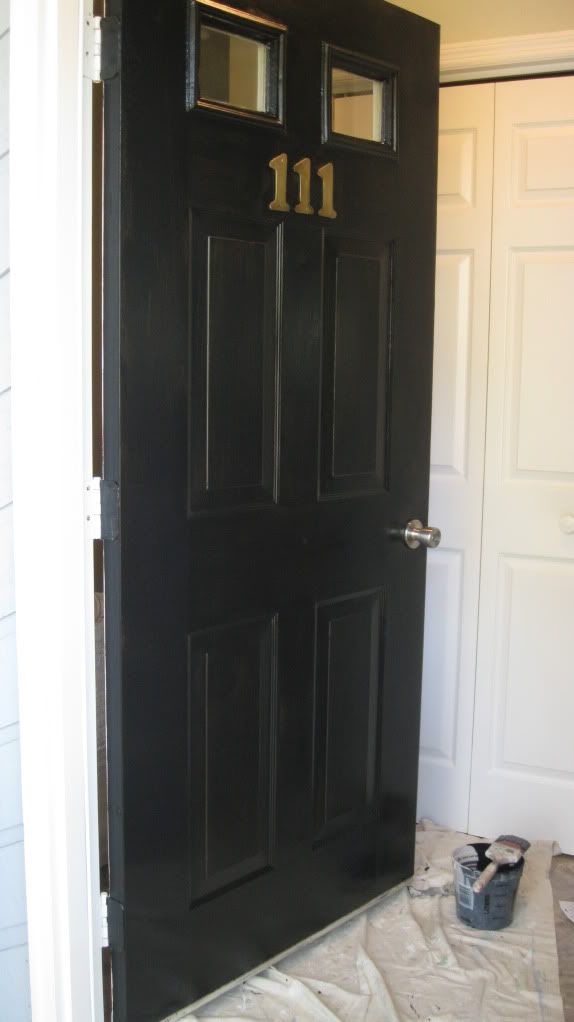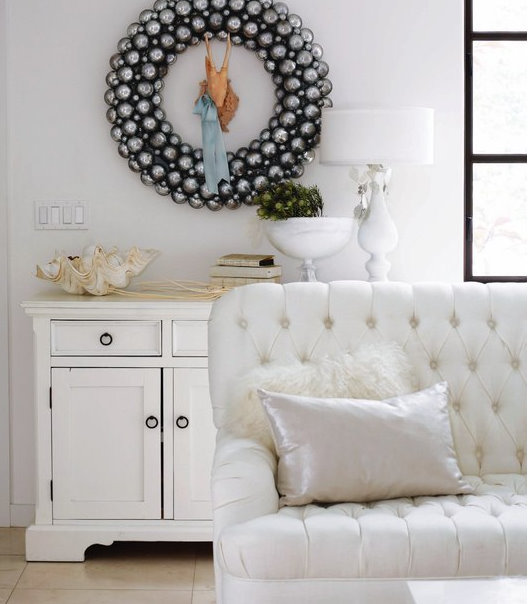I usually advise against ethnic decorating for staging, but the global or boho look is so handsome that I wanted to find a way home stagers could use it.
Global decor is characterized by its cultural diversity, its love of color, texture, and pattern, as well as its emphasis on items made by hand from natural materials.
From a staging point of view, though, global decor has some problems. First, it tends to be dark or muddy, with undertones of browns -- not crisp and clean. Secondly, some demographic groups prefer a more red-white-and-blue approach, more Ralph Lauren than Pier 1.
Finally, ethnic decor can give off an artsy or eclectic look that's not understood or appreciated by less sophisticated buyers.
Unique objects can be distracting and confusing to some people.
But if you want to make your rooms memorable for people who are looking at multiple homes, the slightly exotic flair of global decor might be the way to do just that. Global design is more likely to resonate with buyers in more metropolitan areas than in small towns, and more with younger buyers than older ones. Still, some elements appeal to everyone.
To make global decor appropriate for staging, here are tips.
Limit the wild stuff
 |
| Photo: Elle Decor |
This San Francisco room belongs to Monelle Totah, who is vice president of design at Williams Sonoma. It manages to capture the fun vibe of global design and still look sophisticated. For home staging, one zebra rug is gonna be enough for the whole house! Go easy on the bizarre. Not only is it distracting, but you want buyers to relate to you in a positive way, not wonder what the heck kind of person lives here.
Keep the color scheme simple
Even though this room uses modern materials like glass and steel, the look is ethnic because it's accessorized with bold, handmade objects. The room is grounded by a simple color scheme of black and white. With touches of wood, the effect is one of comfort and richness. Simplicity's important to keep house hunters from feeling overwhelmed.
Accessorize with whimsy
Touches of some humor make a room more friendly to buyers.
While global style often counts on bold carved or painted masks to create that well-traveled look, a home stager will get better mileage from whimsical and abstract art.
Also on the list of what to pack away: paintings of saints, statues of Buddha, crucifixes, Krishna shrines, and other religious artifacts. Buyers can have emotional reactions to the connotations these items carry.
Buy from fair trade sources
You can purchase decor items like trays from the importer, wholesaler, and retailer,
Ten Thousand Villages, a nonprofit fair trade organization that markets handcrafted products made by local craftspeople from more than 130 artisan groups in 38 countries. Through their website and stores, you can purchase decorative and useful items from around the world and know your money is going to the people who make them.
Collect your own props
When you travel and when you are out and about in nature, you can be staging your home at the same time! Be on the lookout for found objects and souvenirs that fit with a global look. This could include a Navajo blanket from your trip to the Southwestern U.S., or the acorns you gathered on your walk in the woods. Of course, shells are always a favorite decor prop, whether collected or purchased.
Use natural materials
 |
Natural materials make global decor
warm and real. Photo: Flynnnside
Out Productions via HGTV |
Global style -- also called tribal style -- focuses on natural woods and fabrics, and other organic elements.
Think tropical woods like mahogany, teak, walnut, and other dark stained woods. Textiles should be silks (or silk look-alikes), cotton, and linen.
Wicker and rattan are perfect, are not expensive and contribute to a textured, layered look. Bamboo is one green product that's currently showing up in all kinds of ways, from flooring to fabrics to cutting boards.
An area rug of sea grass, jute or sisal will set the tone for a room built around natural materials.
The danger here for someone staging her home for sale, is veering too far into rustic territory. Most buyers feel more confident when they see familiar objects. They prefer to be surrounded by what they consider to be luxurious rather than what they see as unrefined or primitive elements. It helps to know your market, and who your most likely buyers are. Oriental and dhurrie rugs are classic and safe.
Your props have to work for staging. This means that faux finishes, if convincing, can help you create a natural look. Perhaps you'll choose to turn a laminate countertop or plastic plant container into one that looks like stone, or paint a group of picture frames to imitate ebony. That's just good staging.
Don't forget that greenery, real or silk, is one of the best ways to give a room some life. For the style we're talking about here, tropical plants with big leaves, as well as wild grasses, will contribute to the look.
Lay on the textures
A variety of textures make the room look interesting. Nubby rugs, smooth walls, glassy metals, and some pillows with interesting textures and rich colors, all add up to a room that makes buyers want to stay a while.
The more time house hunters spend in your home, the more emotionally invested they become, and the more likely you are to see a purchase offer. Retail stores and online sites know this rule. They encourage lingering, making the most of the time customers spend with them.
Add handmade accessories
Look for one-of-a-kind items like bowls, baskets, sculptures, rugs, and tapestries. Many retail stores and boutiques offer unique collections of decor accents like pillows, frames, and candlesticks. Thrift stores can be a treasure trove of unusual, ethnic props. Shop
World Market,
Boho Luxe Home, and
Island Woods for ideas and products. Avoid anything crudely fashioned because it could cheapen the look you're aiming for.
Keep it informal
Incorporating some formal touches will add elegance. Many Americans, especially older ones, tend to equate quality with poshness and formality.
To keep the global look from looking too casual, add formal flourishes like pairs of chairs or pairs of lamps. Some shiny surfaces like glass, metals and mirrors push a room towards more formality. In this photo, the matched chairs and sets of pillows, plus the sparkling chandelier, all the mirrors, and a glistening silver tray keep this room from looking too informal.
Add authentic items
 |
| Photo: http://www.featheringanest.blogspot.com |
Pulling off the tribal look with aplomb isn't difficult when you mix in some traditional arts. One example is batik, a distinctive fabric print made by painting designs with hot wax before the fabric is dyed. It has a look all its own.
You can count on the traditional arts and crafts of any country, including Native America, for decorative elements.
You can even mix pottery from Mediterranean countries, textile wall hangings from India, wooden picture frames from Bali, lacquerware from Japan, punched tin from Mexico, painted tiles from Morocco, and bark paintings from Africa.
I talk about what styles of interior decoration work well for home staging and which ones don't in my
eBook, DIY Home Staging Tips to Sell Your Home Fast and for Top Dollar.
The appeal of global decorating is its richness of textures, variety of patterns, and saturation of colors -- techniques you can incorporate into almost any home. Frugal DIY home stagers can easily imitate this warm and relaxing style because they can find many of its characteristic elements at flea markets and second-hand stores.
So, pretend you're taking a trip around the world, and have fun with this approach to staging. Adding some international flair will inject the kind of style that will make your home the one that buyers remember.


















